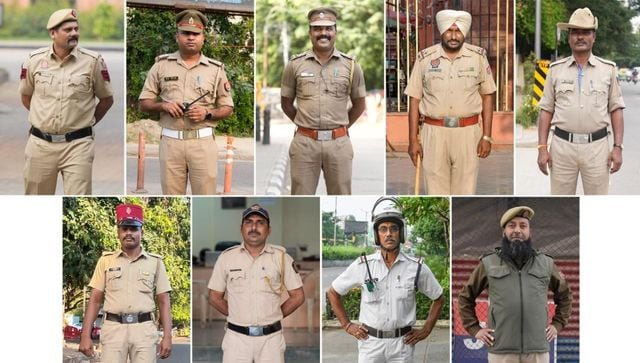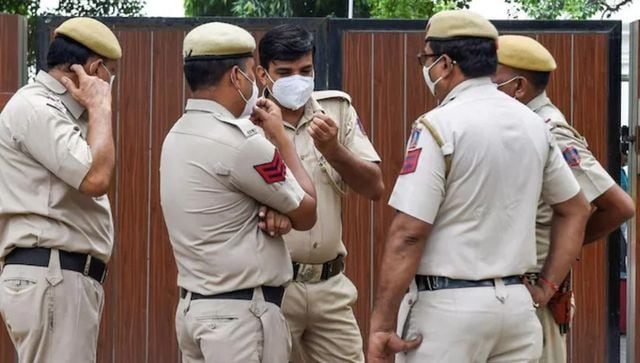Prime Minister Narendra Modi mooted the idea of ‘One Nation, One Uniform’ for police on Friday (28 October). He made the remarks at the first Chintan Shivir (brainstorming session) of state home ministers.
“The ‘One Nation, One Uniform’ for police is just an idea. I am not trying to impose it on you. Just give it a thought. It may happen, it may happen in five, 50, or 100 years. All the states should just think it over,” the prime minister was quoted as saying by Indian Express.
Modi said ‘One Nation, One Uniform’ for police will not only ensure quality products due to the large scale but also provide a ‘common identity’ to law enforcement.
“Just like there is a post box that has a distinct identity, police uniforms should be identifiable uniformly across the country,” he added.
Prime Minister’s suggestion for consistency in police dress comes amid his call for a uniform set of policies across the country.
“There is one important issue for our nation. Currently, in our country, there is a ‘One Nation, One Ration’ card; ‘One Nation, One Mobility’ card; ‘One Nation, One Grid’ and a ‘One Nation, One Sign language’. Just like this, all the states should think of a ‘One Nation, One Uniform’ policy,” he said while pitching the idea.
Currently, the British-era khaki uniform is worn by the majority of police personnel across the country, however, their shades, fabric and patterns change with states and Union Territories (UT).
What is the history of police uniforms in India? Why are uniforms for the police different in states? Have there been changes adopted in police uniforms recently? Let’s take a closer look.
History of police uniforms
When the British came to India, a white uniform was worn by the police personnel. However, due to dust and mud, this white uniform was easily soiled.
To save their uniforms from getting dirty, police officers began to dye them in a variety of colours, which led to multicolored outfits, as per the Uniformer website.
Khaki was selected as the official colour for police uniforms in 1847 by Sir Henry Lawrence after he realised the benefits of the hue. It is not a very dark colour and would easily hide the dirt on the dress.
Since then, khaki-coloured uniforms have been worn by the police in the country.
Who decides police uniforms in India?
According to the Constitution, law and order is a state subject in India, and hence, decisions on uniforms and other aspects related to policing come under the local governments.
The List II (State List) of the Seventh Schedule of the Constitution lists ‘public order’ and the ‘police’ and deals with the division of powers between the Union and states.
The state governments and even an individual police force can take a call on the uniform their personnel wear, reports Indian Express.
Different uniforms in states
The official attire donned by the police varies across states. While most of the personnel wear khaki uniforms, albeit, in different shades, some state police also wear white.
The white uniform is worn by the Kolkata Police but the rest of the West Bengal cops have adopted khaki coloured outfits.

Delhi Traffic Police personnel wear white as well as blue uniforms.
Puducherry Police constables don bright red caps with their khaki uniforms.
ALSO READ: Should Indian lawyers do away with robes? Dress code in the spotlight after law minister’s remark
Recent alterations in police uniforms
In February this year, the Maharashtra Director General of Police (DGP) issued a notice discontinuing the ‘tunic uniform’ for officers from the rank of Police Sub Inspectors (PSI) to Deputy Superintendent (DySP).
The DGP cited discomfort and costliness of the tunic uniform as the reasons for the order.
Donned by British police officers traditionally, a tunic uniform is a khaki terry overcoat worn over the conventional uniform by the police personnel.
The Odisha government also discarded the British-era tunic uniform and the colonial Sam Browne belt in February this year.
The Sam Browne belt or cross belt is now to be worn during ceremonial occasions only when an officer is carrying a sword, Times of India cited the Odisha home department’s order as saying.
Indian Express reported in March 2022 that the Delhi Police has roped in the National Institute of Fashion Technology (NIFT) to design fresh uniforms keeping in mind comfortable clothing for its force.

“The categories of uniforms it plans to get redesigned include khaki summer uniform for men and women, white and blue summer uniform for traffic police, ceremonial uniform (summer and winter), summer and winter uniform for personnel of security unit of Delhi Police, choice of uniform for women, which could include fusion of traditional and western outfits,” a senior police officer had told Indian Express.
An addition was made to the uniform of the Delhi Police in February this year when an insignia culled from the ‘Colours’ was introduced, reports ThePrint. This was done to mark the 1954 award of ‘Colours’ bestowed on the city police by the then President of India.
अशोक स्तंभ पहले की तरह दिल्ली पुलिस के प्रतीक चिन्ह का अनिवार्य हिस्सा है क्योंकि दिल्ली पुलिस के प्रतीक चिन्ह में कोई बदलाव नही किया गया है।
दिल्ली पुलिस सभी राष्ट्रीय प्रतीकों पर गर्व करती है।(2/2)@ANI@PTI_News— Delhi Police (@DelhiPolice) February 17, 2022
In January 2020, the Maharashtra Police defined a universal colour code– PANTONE 18-1022 TCX– for the khaki cloth used in the uniform to avoid inconsistencies.
Earlier in February 2018, to prevent variations in the uniform of its personnel, the Maharashtra Police Department had announced to purchase khaki fabric for its staff. The state police had approved dope-dyed khaki fabric for the force ‘to bring uniformity in the uniform colour’, a senior police official from the DGP office told PTI.
In October 2018, the Karnataka Police decided that women personnel would wear a khaki shirt and trousers while on duty, instead of khaki saris. The move was introduced to improve the effectiveness of policewomen while performing their duty, reports Indian Express.
With inputs from agencies
Read all the Latest News, Trending News, Cricket News, Bollywood News,
India News and Entertainment News here. Follow us on Facebook, Twitter and Instagram.
from Firstpost India Latest News https://ift.tt/nGJI6pE
No comments:
Post a Comment